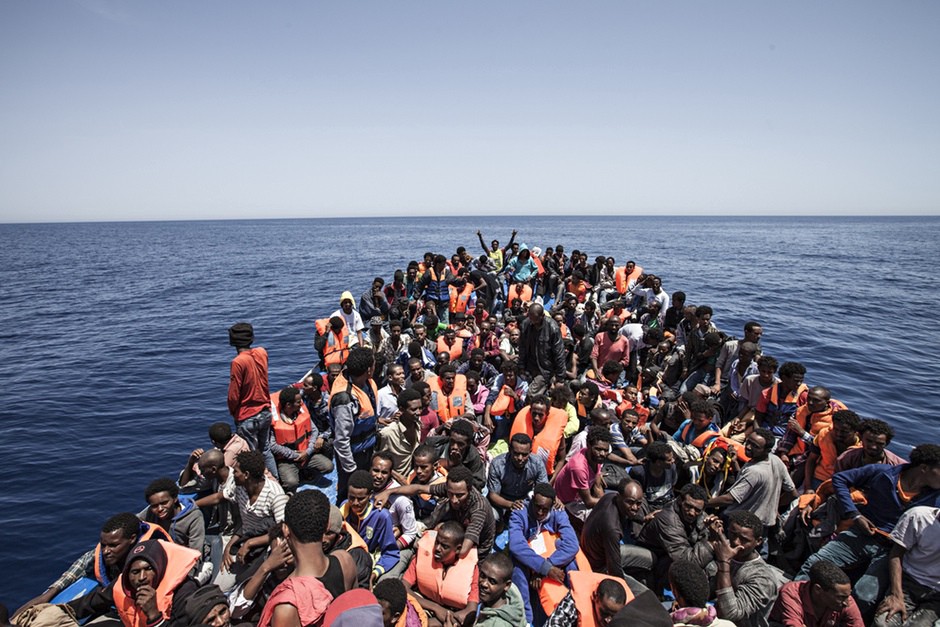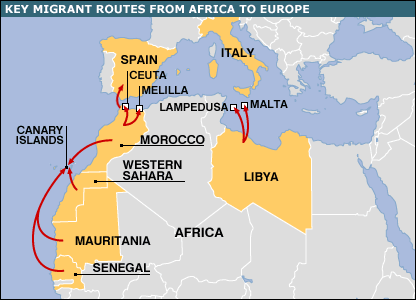
During late October and early November, several towns in the Canary archipelago rose in huge protests against illegal immigration as they called it. Many called it ‘invasion’ of the islands by the migrants.
With 16,000 migrants from northern Africa coming on its shores with nearly 700 in the last few days alone, Canary islands in southern Spain stares at an existential crisis. Refusal to take in refugees might lead to a humanitarian crisis but allowing the huge influx into Spain could threaten the very resources and livelihoods of the local residents. Spanish Coastguards rescued more than 700 migrants just on November 14 and brought them to the islands. The Canary Islands which is the southernmost autonomous community of Spain is situated off the western coast of southern Morocco and is part of the European Union.
On one hand aid agencies and migrants demand better facilities and living conditions, the local residents protest against the lack of efforts by the Spanish government to manage the crisis or handle the illegal migration. The Spanish has made arrangements for a few thousand migrants in camps while agency estimates suggest that more than 4000 migrants are living in tourist hotels due to the lack of refugee reception centres.
The migrant crisis has hit the island’s famed tourism industry which is the main employment generator for the residents. With hotels and inns filled with migrants, tourists have been avoiding the islands after the lockdown over the Corona pandemic was lifted. The local residents who suffered due to shutdown of tourism due to COVID-19 for most of the year are forced to deal with a new threat. The Federation of Hospitality and Tourism Enterprises of Gran Canaria has called on the government to act so hotels could be used again for tourists.
The migrants are also taking up menial jobs for lower employment costs which is also a threat to the local residents. The Islanders have accused the central government of not doing enough to address their concerns over resources, facilities for the migrants and livelihoods. Despite the long drawn migrant crisis over the last few years, the authorities have been unable to provide adequate facilities or assistance to the migrants. The migrant crisis which hit the islands in 2018, increased in 2019 and exploded early this year. Under pressure from the migrants seeking local resources, the residents have been forced to staging public protests for many months now.
During late October and early November, several towns in the Canary archipelago rose in huge protests against illegal immigration as they called it. Many called it ‘invasion’ of the islands by the migrants. A protest march was also organised in Arguineguín, a village of 2,500 residents that is part of the tourist town of Mogán, in the southwest area of the island of Gran Canaria in the Canary Islands. Since late August, this village was forced to become a center of immigration from Africa with over 1,300 people crowded at emergency port facilities which were meant to hold no more than 600.
After the recent attacks in France, Spanish citizens also fear that such an unprecedented influx of migrants will give rise to terrorist activities in the country and islands if things are not controlled.

During the demonstrations, the residents urged the Spanish government to make a clear policy for migrants and create proper facilities for them that does not hinder the lives of the residents. Many others said that such migration was illegal and it has to be stopped to safeguard the locals. The protestors asked for the resignation of the Spanish Prime Minister Pedro Sánchez for being unable to safeguard the interests of the citizens. As the migrants continue to enter the shores of the Island, tension has increased between the regional government and central authorities due to the rising anger among the local population. The Mayor of Mogán in a public statement made in September, said they were angry at the lack of action by the Spanish government.
To add to the further woes of the local residents, the Spanish government has ceased most transfers of the migrants from the island to mainland Spain. The decision was justified by the government saying that the transfers would happen only if the migrants qualify for asylum meeting all criteria. But this decision has led to a lot of concentration of people on the islands, especially at a time when there has been a steady flow of 2,000 people day after day. While some migrants spend some time under Red Cross tents and temporary shelters erected by aid agencies, most make it to the main island and try to accommodate themselves in hotels and inns.
Representatives from the UN. Refugee and migration agencies visited the Canary islands this week to assess the crisis. The UNHCR says that this present wave of migration has been fueled by people fleeing violence in the Sahel region or the Ivory Coast, extreme poverty, climate change and the coronavirus pandemic. These reasons have not cut ice with the residents of Canary Islands who say that this was an ‘invasion’ of sorts to take advantage of better living conditions and facilities in Spain.
A Associated Press report says that the Spanish government plans to increase aid for Africa while speeding up deportations of those who don’t meet the criteria to stay in Europe. It also plans to fund police operations against people traffickers in Morocco, Mauritania and Senegal, the northwestern African countries that are the main points of departure for migrants bound for Spain through Canary Islands.
Local news reports from the islands say that the locals are already facing hunger and an unemployment rate of 25% and the newly arriving migrants have sparked fears of COVID-19 contagion. After the recent attacks in France, Spanish citizens also fear that such an unprecedented influx of migrants will give rise to terrorist activities in the country and islands if things are not controlled. While Spain waits for the EU to fund its migrant resettlement program, the local residents have to live in fear of their depleting resources and loss in livelihoods.
